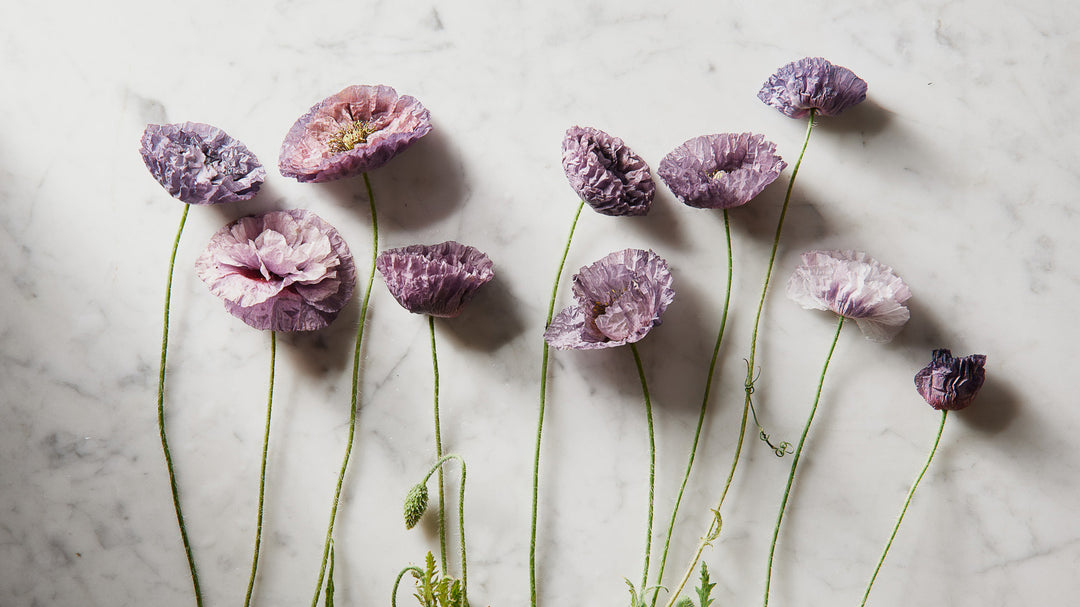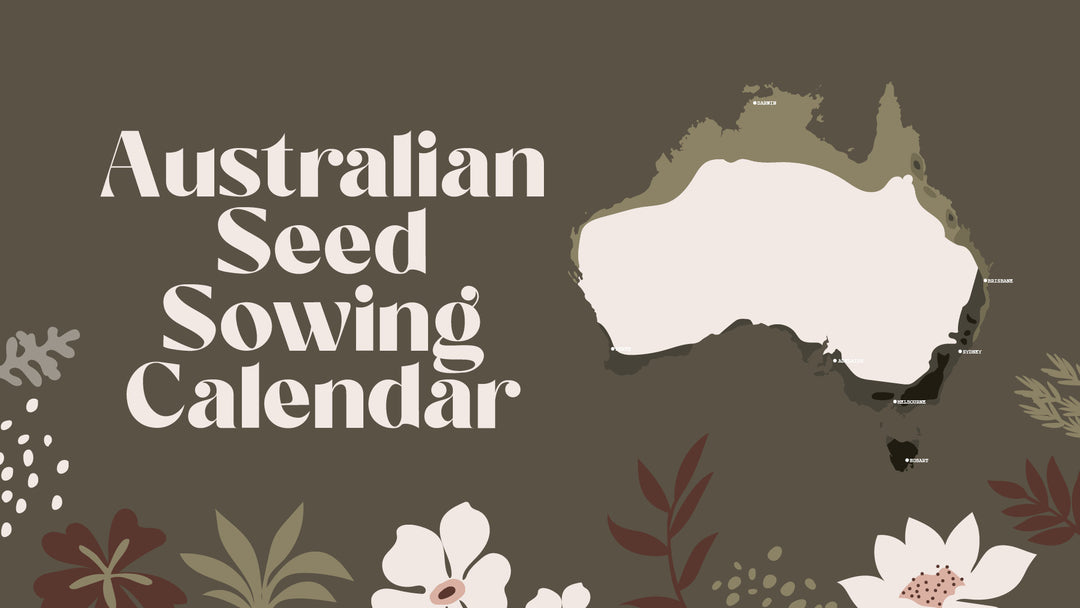How To Grow Sweet Pea Flowers From Seed

If you have ever had the chance to smell a bunch of Sweet Pea flowers you will know how delicious their fragrance is, one of the best smelling flowers!
Sweet Pea (Lathyrus odoratus) seeds are traditionally sown on St Patrick’s Day (March 17th) and throughout Autumn, but if you live in super cold frosty areas it's best to wait until Spring - in saying that sweet peas can handle some light frosts.
There are 3 main types of sweet peas that need a certain amount of sunlight and will flower in different seasons. Elegance needs around 10 hours of daylight, and will flower in Winter if planted in Autumn. Mammoth need around 11 hours of daylight and will flower in Spring and Spencer need around 12 hours of daylight and will flower in Summer, Spencer varieties are heat tolerant.
Sowing Sweet Peas
- Before sowing Sweet Pea seeds, it is essential you prepare your soil as Sweet Peas are heavy feeders. Digging in compost, rotten manure and organic fertiliser will ensure your soil is rich in nutrients and keep your sweet peas happy, healthy and well fed! Sweet Peas also need well draining soil.
- We used to recommend soaking the seeds prior to sowing, but it is now recommended by the sweet pea experts such as sweet pea breeders, Dr. Keith Hammet and Roger Parsons not to soak the seeds as it can lower germination and possibly introduce disease.
- The seeds can be direct sown straight into the prepared garden beds, 25mm deep, making sure they are protected from slugs, birds etc. I prefer to start mine in the greenhouse in single cell deep root trainer pots. Once germinated to avoid leggy seedlings move to a cooler area in the greenhouse, but still need all day sun. Care must be taken when transferring seedlings as they can suffer from transplant shock.
- When direct sowing the seeds, or then transplanting your seedlings into the garden, plant them 15cm apart, a little room between plants will give airflow and help prevent powdery mildew. They are best planted in open sunny areas with at least 6 hours sunlight, basically the flowers need plenty of sunshine but their roots to be kept cool.
- The seedlings can be pinched out at 10cm (snipping the top off) for bushy plants, which will then produce more flowers. Each plant should send off a side shoot, if the first shoot happens to snap at the base, don't discard as it will likely re sprout its side shoot.
Something new I’ve learnt since writing this blog is that you can then propagate the pinch off part of your seedling to grow more of the same plants, I am yet to trial but will shortly and report back with how it goes!
Growing Sweet Peas
- Sweet Peas are an annual climbing vine that can grow up to 2 meters, they will need a strong trellis (pulled tight) to climb up and you will need to tie young seedlings to the trellis as they grow, they can grow very fast, so in peak growing times this will need to be done weekly.
- Protect Sweet Peas from wind, making sure they are planted in a sheltered area.
- Feed sweet pea plants fortnightly seaweed treatments this will help keep the nutrients up to the heavy feeders.
- Sweet Peas require regular and deep watering. I use drip irrigation at the base of the plants.
- Once established, powdery mildew is very common.
Dr. Keith Hammett recommends to prevent powdery mildew becoming a problem spray with a suitable fungicide late October or early November.
- For longer stems, make sure you cut the side tendrils off regularly.
- The flowers will be ready to harvest when there are at least two un-opened blooms on the stem. The more you pick, the more flowers they will produce. To extend vase life, change the water regularly and add in a spoonful of sugar.
Sweet Peas are a such an amazing beneficial flower, as they are in fact a type of legume and will add nitrogen to the soil.
Saving Sweet Pea seeds is very easy and will stay true to type as they self pollinate before they flower. When harvesting the seeds you need to wait until they are brown and crunch. I give them a little squeeze... they will crack open if ready and if not quite will still be a little soft. The actual seeds will need to be brown all over. They can then be stored in a paper bag in a dry area.
Unlike normal Sweet Peas, Sweet Pea Lathyrus odoratus seed and seed pod are not to be eaten, as they are considered toxic to humans and animals.
Shop our Sweet Pea collection here










